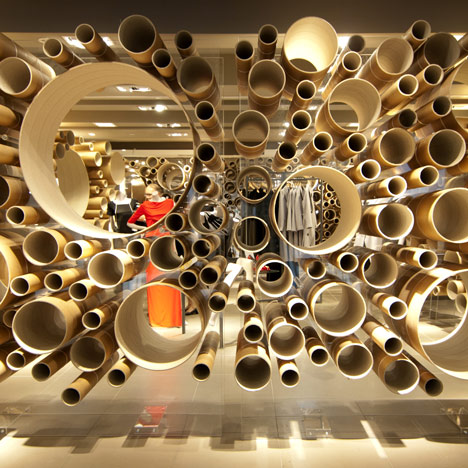
John Lewis Fashion Pavilion by Grimshaw
Architects Grimshaw have completed an installation for London department store John Lewis that's made of suspended cardboard tubes.
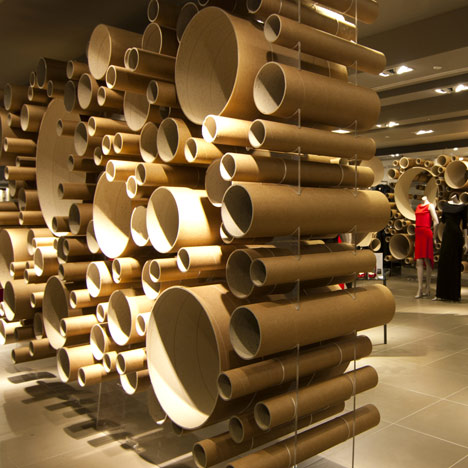
The tubes vary in length and sit in the circular holes cut from two vertical sheets of clear acrylic.
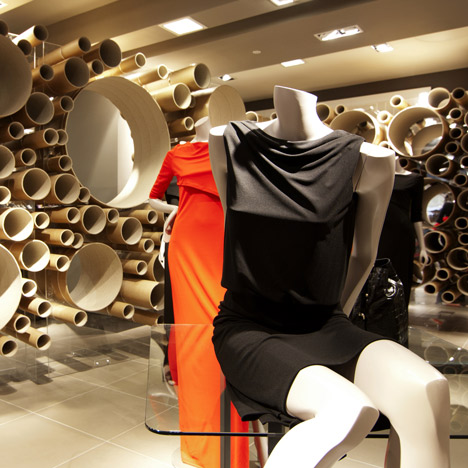
The design will debut at John Lewis' Oxford Street shop for two months before moving around the UK to stores including Cardiff, Edinburgh and Liverpool.

The modular nature of the design allows for various configurations at each department store and designers can either use the tubes to display garments or as screens to enclose their collections.
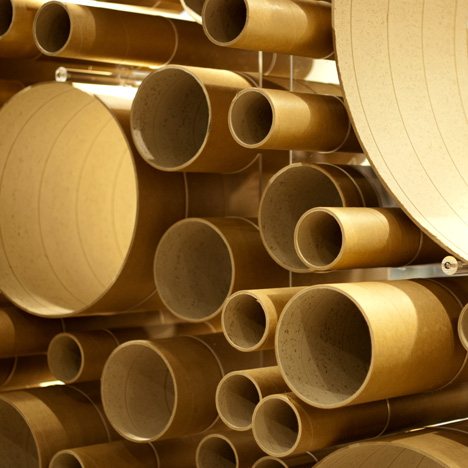
Other projects by Grimshaw include bus shelters in New York, the RIBA Stirling Prize nominated Bijlmer Station in Amsterdam and an extension to the Excel Exhibition Centre in London.
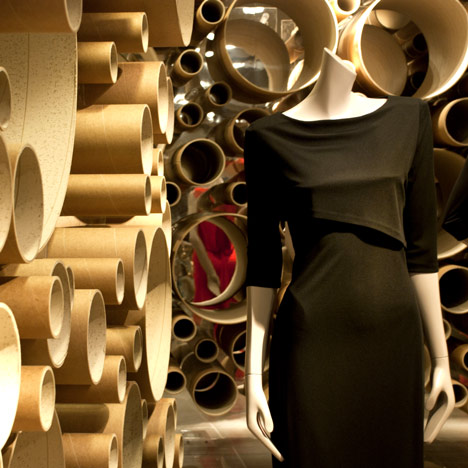
Photography is by Lim/Grimshaw.
Here's some information from Grimshaw:
John Lewis approached Grimshaw to provide a temporary exhibit and event space capable of showcasing a variety of designers within their store on Oxford Street.
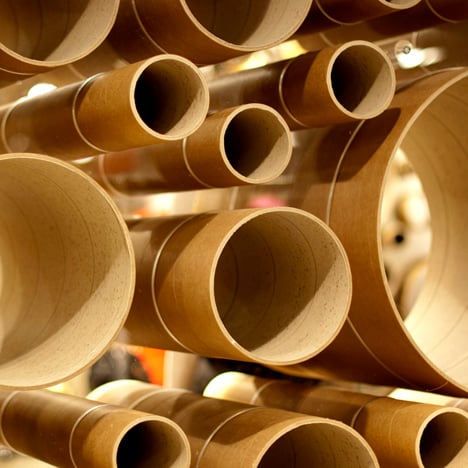
This unique ‘pop-up’ installation called for an innovative proposal which fused exhibition design and architecture, whilst enabling John Lewis to express their brand in an exciting and striking space.
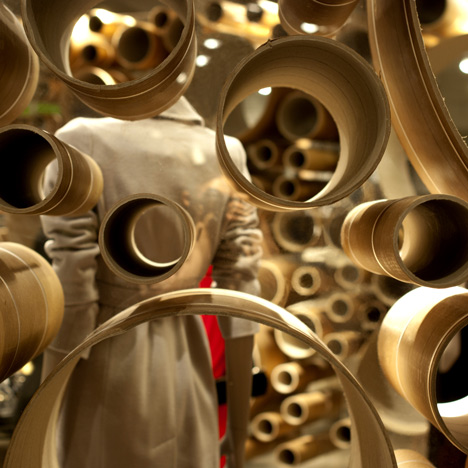
The installation will be initially located on the first floor at Oxford Street, and will subsequently travel to other John Lewis stores in the UK.
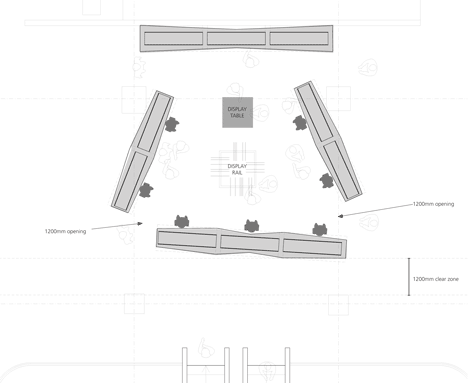
Click above for larger image
Comprised of simple cardboard tubes suspended in clear Perspex sheets, the modular panel design creates a flexible and enclosed environment of varying transparency. This flexibility allows for various configurations to be explored in different locations around the UK. A solution is formed with three easily fabricated panel types resulting in an events space which both draws the public in and screens off its surrounding environment, offering a degree of privacy.

Click above for larger image
The long-standing relationship between John Lewis and their collection of fabrics and materials is expressed with a selection of each wrapped around a tubular cardboard spine. The installation celebrates these objects and organises them in an unfamiliar way by creating views beyond and between the different panels. The tubes vary in both length and diameter; each one is suspended within two vertical sheets of acrylic, along with transparent joining rods which are visible amongst the tubes. The range of tube sizes creates a kit of parts whereby designers can choose to display within them or simply frame their exhibited retail range.